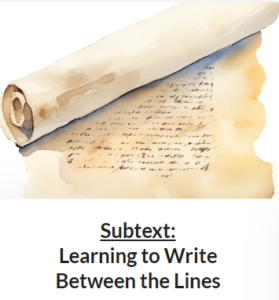Struggling to turn your ancestor’s life story into an engaging narrative? In this video, we’ll explore why ‘birth-to-death’ summaries fall flat and how focusing on key scene moments can bring their story to life. Let’s dive in!”
Struggling to turn your ancestor’s life story into an engaging narrative? In this video, we’ll explore why ‘birth-to-death’ summaries fall flat and how focusing on key scene moments can bring their story to life. Let’s dive in!”
In just 15 minutes a day over 5 days you could write a small family story scene that could be shared in some interesting ways over the holiday season. Watch to learn how than click here to download your free resource to help you.
Today’s discussion is all about how age influences character development in our writing. It’s more than just a number; it’s a dynamic element that can shape your ancestors’ perspectives, decisions, and interactions.
Show, Don’t Tell you’ve heard it from me, perhaps other writing teachers, in books and on blogs across the internet. But what does it really mean? In today’s Storylines, we look at the difference between showing and telling, along with where to use it in your stories. We’ll also tell you all about the upcoming Show & Tell Summit and how it is going to answer all your questions.
Unlock the hidden layers of your writing in our latest lesson, “Writing Between the Lines: Understanding Subtext. Dive into the art of subtext and discover how to convey powerful emotions and unspoken truths without saying a word. This eye-opening video will help you understand what is subtext and why we need subtext in our family history stories. Don’t miss out—click to watch and learn about he subtle nuances that can elevate your writing from good to unforgettable!

In this week’s video, we delve into the art of bringing your ancestor’s voice to life on the page. Join us as we unravel the intricate elements that writers employ to craft a character’s unique voice. Don’t miss this opportunity to enhance your narrative skills and infuse your characters with depth and authenticity. Tune in for a masterclass on character voice creation that will elevate your writing to new heights!
In this video, we’re going to delve into why you should embrace outlining your scenes but also some of the basics of outlining a scene in your ancestor’s story. We’ll guide you through the various elements you should identify in advance of writing the scene and also introduce you to a couple of tools that make it easy and fun.
If you missed last week’s Scene vs Summary video you’ll find it here.
Here’s the three tools I reference in this video

Today, we’re diving into an essential topic that will elevate your family stories from good to unforgettable. We’re exploring the art of using ‘Scene’ and ‘Summary.”Just like a chef knowing when to add a dash of spice or a sprinkle of sugar, as family history writers, we need to understand when to use a scene or a summary. Are you ready to master this delicate balance? Watch today’s Storylines.
Hey there, fellow scribes! Welcome back to my writer’s corner, where we dive deep into the art of family history storytelling. Today, we’re tackling a topic that’s essential for any budding writer: head hopping. You might be wondering, “What on earth is head hopping?” Well, fear not, because in this video, we’ll unravel the mysteries behind this sneaky technique and discover how to steer clear of its pitfalls. It’s like navigating a treacherous river, but with the right knowledge and guidance, you’ll be able to keep your readers engaged and immersed in your narrative. So grab your pens and notebooks, and let’s embark on this exciting journey together.
Today, let’s delve into an important topic that will truly elevate your storytelling skills – point of view. Discover the point of view that is most suited to writing family history stories and learn all about its superpowers. Join us for this enlightening lesson and unlock the secrets of creating multi-dimensional masterpieces.